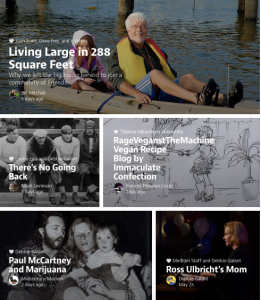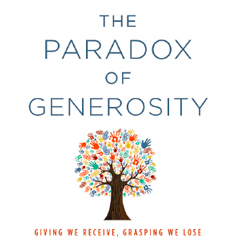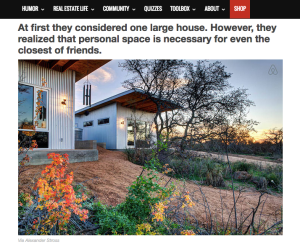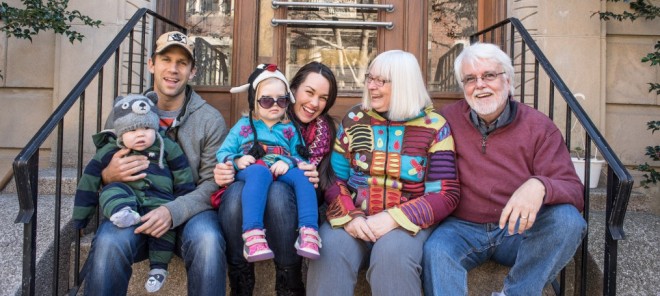And we hope you’ll join us there in our new adventure, living across the hall from Kate & Marton and Leila & Mateo. You can sign up for email alerts to new posts on the new blog simply by clicking Follow Across the Hall in the right rail of the new site. Read more about what we’re up to here.
No longer a housie but still in it together
For the first time in a couple of years, I climbed the steps to the Friends House not as a resident but as a guy with no way in.
I had to remind myself not to use the special doorbell code for housies who’ve forgotten their key. Instead, I pressed the bell once and waited, much as any passerby might.
The greeting I got from Ben was a boisterous reminder that, at least among my former housemates, I’m no stranger.
 The visit got me thinking about what I share with the 32 people previously known as strangers with whom I did dish crew, shoveled snow, painted a bathroom, installed a lightswitch, scrubbed toilets, washed windows, sat in silence and passed the talking rock between June 2013 and August 2015.
The visit got me thinking about what I share with the 32 people previously known as strangers with whom I did dish crew, shoveled snow, painted a bathroom, installed a lightswitch, scrubbed toilets, washed windows, sat in silence and passed the talking rock between June 2013 and August 2015.
Stepping into the office, Ben pointed me to a bin of mail the Post Office had failed to forward. I glanced at the mailboxes of the 21 current residents and noticed a couple of new names above our old slots
Heading downstairs to the kitchen, I ran into Billy, who’d made such an impression on Leila, our two-and-a-half-year-old granddaughter, that she was convinced he’d be joining us in our new apartment in Brookline. Encountering a friendly face I didn’t recognize, I figured it must be John, who moved in by virtue of us moving out. He lives now in our old room on the third floor. Continue reading
The Road Goes On…

Clicking on this Google Map will give you a better view of where our new place is vis-a-vis BHFH, just a bit over three miles west along Beacon Street.
I’ve never been a big fan of transitions. I hate that feeling of being torn between the sadness of leaving one thing and the excitement of the new adventure. Bill and I have decided to move into an apartment across the hall from our daughter, Kate, her husband, Marton, and our grandchildren, Leila and Mateo. Not immediately, but by early August. As exciting and happy as that is, it also means leaving our community at Beacon Hill Friends House.
Over the past two years this community has been the welcoming home where we transitioned into the next phase of our lives. We’ve had the luxury of good friends and interesting souls with whom to share our lives. We’ve had none of the worries of keeping up our own place or shopping for groceries. Dinner was provided five nights a week. Continue reading
A lesson from my first AA meeting
 Shortly after getting off the plane in San Francisco last week, I went to my first AA meeting. A friend invited me to tag along to the gathering where she’s been a regular for years. It was an open meeting — meaning visitors were welcome — and my friend had been asked to tell her story as the evening’s guest speaker.
Shortly after getting off the plane in San Francisco last week, I went to my first AA meeting. A friend invited me to tag along to the gathering where she’s been a regular for years. It was an open meeting — meaning visitors were welcome — and my friend had been asked to tell her story as the evening’s guest speaker.
In many ways, the ragtag assembly of a few dozen folks in a nondescript storefront reminded me of our twice-monthly house meetings at BHFH. Both begin with a moment of silence. Both follow clearly prescribed (and time-limited) procedures for sharing personal stories and conducting business. Both are closely aligned to the values of their sponsoring organizations — Alcoholics Anonymous and the Religious Society of Friends (Quakers). Both organizations refer to their Meetings in ways that suggest an upper case M.
I expected to learn some new things about my friend at the AA meeting, and I did. What surprised me was learning something about the topic that occasioned our trip to the west coast in the first place.
In good company: A Year in a Room on Midcentury/Modern
 Debbie Galant, editor of an intriguing new online magazine focused on “following Boomers into their third act,” invited us to introduce readers of Midcenutry/Modern to A Year in a Room.
Debbie Galant, editor of an intriguing new online magazine focused on “following Boomers into their third act,” invited us to introduce readers of Midcenutry/Modern to A Year in a Room.
Since her good edits included questions I’m not sure we’ve answered on ayearinaroom.com, I’ve included a link to the story here. That photo of granddaughter Lanie, now 14, is a bit dated, but we sure did enjoy those pedal kayaks in St. Pete.
While you’re visiting Midcentury/Modern, I hope you’ll take time to read a couple of stories I’ve recommended there:
 Still Ticking, Debbie’s story of one of those dreaded 5 a.m. phone calls about an elderly relative, shows that not all such tales end badly.
Still Ticking, Debbie’s story of one of those dreaded 5 a.m. phone calls about an elderly relative, shows that not all such tales end badly.- Spring Break, Jan Schaffer’s courageous account of a 12-day road trip with her 21 year-old son as he pursues the path of recovery from drug addiction.
 You can read more about Midcentury/Modern in this announcement of its selection as one of four winners of “Geezer Grants” for media startups created by people 50-plus. I’m aware of various journalism awards programs and conferences for other demographics — including young journalists and women entrepreneurs — but this is the first I’ve seen for the demographic I now call home. Just the sort of thing that someone enrolled in a gap year for geezers might want to pursue.
You can read more about Midcentury/Modern in this announcement of its selection as one of four winners of “Geezer Grants” for media startups created by people 50-plus. I’m aware of various journalism awards programs and conferences for other demographics — including young journalists and women entrepreneurs — but this is the first I’ve seen for the demographic I now call home. Just the sort of thing that someone enrolled in a gap year for geezers might want to pursue.
On generosity: How much is enough?
 I’ve been reading a lot about generosity in preparation for leading a retreat on that subject this weekend. The books have ranged from informative (The Paradox of Generosity: Giving We Receive, Grasping We Lose) to challenging (The Life You Can Save: Acting Now to End World Poverty) to inspiring (More or Less: Choosing a Life Style of Excessive Generosity). Each of them has invited me to re-evaluate the way we live. And the way we give.
I’ve been reading a lot about generosity in preparation for leading a retreat on that subject this weekend. The books have ranged from informative (The Paradox of Generosity: Giving We Receive, Grasping We Lose) to challenging (The Life You Can Save: Acting Now to End World Poverty) to inspiring (More or Less: Choosing a Life Style of Excessive Generosity). Each of them has invited me to re-evaluate the way we live. And the way we give.
Christian Smith and Hillary Davidson, researchers at Notre Dame, identify various types of generosity: Giving money, volunteering, neighborly generosity (watching someone’s house when they’re away, etc) and relational generosity (being generous within one’s extended family). They found that generous Americans experienced more health, happiness, purpose in life and sense of well-being. Despite this, they also found a surprisingly high percentage of ungenerous Americans who live in fear of not having enough for themselves down the road. Continue reading
On the ways we might live next

A group of friends clustered tiny houses together in Texas. (screengrab: lightersideofrealestate.com)
Coming up on two years at BHFH (it turned out that ayearinaroom wasn’t enough), we’ve applied for what’s known as “third year residency.”
The house puts a limit on how long residents can live here. At the outset, you’re admitted for two years. Staying longer requires an application making the case that you’ve been a reasonably reliable contributor to house life and that you’ll continue in that vein in the year ahead. A similar process is available for a fourth year, but that’s the limit.
In the two years we’ve been here, the house has welcomed 16 new residents. Four of them have left for one reason or another. Of our 19 current housemates, we’ve been here longer than 12.
As much as we’ve occasionally wished for a longer tenure, I think the residency limits make sense. Living in this sort of community can be a transformative experience, especially if it’s carried forward into something new. And there’s something about getting to know a new resident every six or seven weeks that makes life at BHFH even more interesting.
We’ve considered a number of options for life after BHFH. Continue reading
Pet peeves of community life: Flip side of the upside
At a recent house meeting (we hold them twice a month at BHFH), everyone was invited to write a couple of pet peeves about living in the house and place them in a basket.
Some of the beefs that made their way into the discussion:
- Overloaded dishracks
- Crumbs around the toaster
- Interrupted conversations
- Lights left on in empty common rooms
Sound like any household you may have been part of at some point?
 One of mine : “More a puzzle than a peeve — how to raise questions or issues with staff without feeling like walking on egg shells.”
One of mine : “More a puzzle than a peeve — how to raise questions or issues with staff without feeling like walking on egg shells.”
One of Carol’s: “When people bring a lot of negativity or irritability into public spaces.”
In some ways, it’s strange that I’d be annoyed by the staff issue. I’ve felt from the start of our time here that one of the best things about BHFH — differentiating it from most coop living situations — is the work of staff who are paid to serve and lead a community they’re also part of. Continue reading
Responsibility – to whom about what?
It’s snowing again in Boston. We seem to have a big storm every week and no warm weather in between for the snow to melt. So, you might wonder, why would I cancel a scheduled trip to Florida for a conference in the middle of it? 
It was a hard decision for me. I grew up in a family where responsibility was the main virtue stressed. That notion was strongly reinforced by Catholic education in the 1950s. Doing what I say I’m going to do, doing what I’m supposed to do, living up to my responsibilities were primary. Hence, canceling a commitment goes against the grain.
In many ways, it’s a virtue that’s helped me in uncountable ways. It helped with parenting. It gave me a good work ethic and let me plow ahead through graduate school despite multiple difficulties.
It’s only as I’ve aged that I’ve seen it as a liability as well as an asset. Growing up, I don’t remember any discussion of these questions: To whom am I responsible? For what? How does that responsibility change over a lifetime? And how do I sort conflicting responsibilities? The answers to those questions make all the difference in whether responsibility works for good or ill. Continue reading
Downsizing as edit: Creating the “abridged version of yourself”
I’ve been watching, via his Facebook page, the transition of friend and colleague Mario Garcia from his 5,400 square-foot home in Tampa Bay to 800 square feet of co-op living in Manhattan.
 His Facebook posts revealed the nuts and bolts of the move as it unfolded. But he’s just posted an essay on the downsizing that reflects the same panache and insight that’s made him one of the world’s leading designers of publications and digital apps.
His Facebook posts revealed the nuts and bolts of the move as it unfolded. But he’s just posted an essay on the downsizing that reflects the same panache and insight that’s made him one of the world’s leading designers of publications and digital apps.
He begins his story like this:
Everyday is special after you edit your life and live with the abridged version of yourself.
This is a story just about that, and how I learned that you don’t have to wait until the third act of your life for editing your life. There is renewal, practicality and emancipation.
As a visual journalist/designer, I have spent my career editing pages for publication, and more recently for websites, phone and tablet apps.
Nothing, however, prepared me for what I call the editing of my life. Editing the work of others can’t compare to the exercise of dealing with the roles of space, economy and redundancy in your own life.
In some respects, our move from Tampa Bay to Boston was more modest than Mario’s. We left a house in St. Pete that was less than half the size of Mario’s across the Bay in Tampa, and we’d lived there for only a decade vs. the 30 years Mario and family spent in theirs. We both relocated to pretty posh parts of pretty great cities — Mario to the Upper East Side of Manhattan; Carol and I to Beacon Hill just a block from Boston Common. Continue reading

